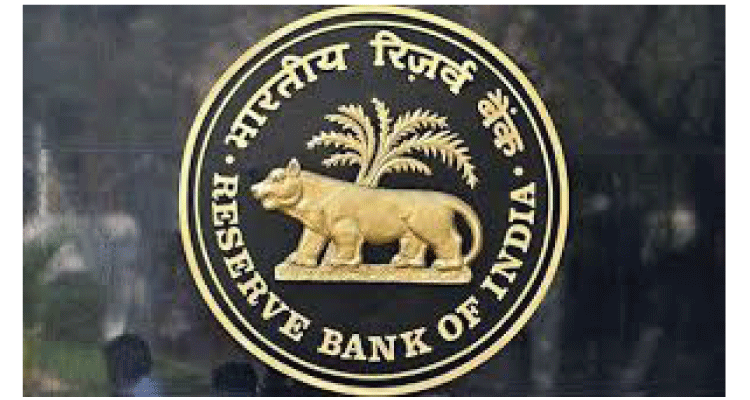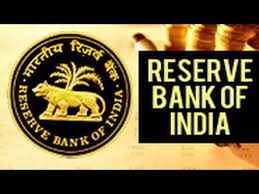RBI-ROLE AND ITS FUNCTIONS
In every nation there is one association which fills in as the national bank. The capacity of the national bank of a nation is to control and screen the managing an account and monetary arrangement of the nation. In India, the Reserve Bank of India (RBI) is the Central Bank.
The RBI was set up in 1935. It was nationalized in 1949. The RBI assumes part of controller of the managing an account framework in India. The Banking Regulation Act 1949 and the RBI Act 1953 has given the RBI the ability to manage the saving money framework.
The RBI has diverse capacities in distinctive parts.
RBI is the Regulator of Financial System
The RBI controls the Indian saving money and monetary framework by issuing wide rules and directions. The goals of these regulations include:
• Controlling cash supply in the framework,
• Checking distinctive key markers like GDP and expansion,
• Keeping up individuals’ trust in the managing an account and money related framework, and
• Giving diverse devices to clients’ assistance, for example, going about as the “Managing an account Ombudsman.”
RBI is the Issuer of Monetary Policy
The RBI plans fiscal arrangement twice per year. It audits the approach each quarter too. The fundamental goals of observing money related arrangement are:
• Expansion control
• Control on bank credit
• Interest rate control
The apparatuses utilized for execution of the destinations of financial strategy are:
• Money Reserve Ratio (CRR) and Statutory Liquidity Ratio (SLR),
• Open business operations,
• Diverse Rates, for example, repo rate, reverse repo rate, and bank rate.
RBI is the Issuer of Currency
The RBI Act offers power to the RBI to issue money notes. The RBI additionally makes a move to control flow of fake money.
RBI is the Controller and Supervision
The RBI has been doled out the part of controlling and regulating the bank framework in India. The RBI is in charge of controlling the general operations of all banks in India. These banks may be:
• Open part banks
• Private part banks
• Remote banks
• Co-agent banks, or
• Local provincial banks
The control and supervisory parts of the Reserve Bank of India is done through the accompanying:
• Issue Of License: Under the Banking Regulation Act 1949, the RBI has been offered forces to give licenses to initiate new keeping money operations. The RBI likewise concedes licenses to open new branches for existing banks. Under the authorizing arrangement, the RBI gives managing an account benefits in regions that don’t have this office.
• Prudential Norms: The RBI issues rules for credit control and administration. The RBI is an individual from the Banking Committee on Banking Supervision (BCBS). As being what is indicated, they are in charge of usage of global guidelines of capital sufficiency standards and resource arrangement.
• Corporate Governance: The RBI has energy to control the arrangement of the administrator and chiefs of banks in India. The RBI has forces to designate extra chiefs in banks too.
• KYC Norms: To control tax evasion and keep the utilization of the saving money framework for monetary criminal acts, The RBI has “Know Your Customer” rules. Each bank needs to guarantee KYC standards are connected before permitting somebody to open a record.
• Straightforwardness Norms: This implies that each bank needs to unveil their charges for giving administrations and clients have the privilege to know these charges.
• Hazard Management: The RBI gives rules to banks to making the strides that are important to relieve hazard. They do this through danger administration in basel standards.
• Review and Inspection: The strategy of review and assessment is controlled by the RBI through off-site and on location observing framework. On location review is finished by the RBI on the premise of “CAMELS”. Capital ampleness; Asset quality; Management; Earning; Liquidity; System and control.
• Outside Exchange Control: The RBI assumes a pivotal part in remote trade exchanges. It does due persistence on every remote exchange, including the inflow and surge of outside trade. It makes moves to stop the fall in estimation of the Indian Rupee. The RBI likewise makes important moves to control the present record shortage. They likewise offer backing to advance fare and the RBI gives a mixed bag of choices to NRIs.
• Improvement: Being the investor of the Government of India, the RBI is in charge of execution of the administration’s approaches identified with farming and provincial advancement. The RBI additionally guarantees the stream of credit to other need divisions too.
• KYC Norms: To control tax evasion and keep the utilization of the saving money framework for monetary criminal acts, The RBI has “Know Your Customer” rules. Each bank needs to guarantee KYC standards are connected before permitting somebody to open a record.
• Straightforwardness Norms: This implies that each bank needs to unveil their charges for giving administrations and clients have the privilege to know these charges.
• Hazard Management: The RBI gives rules to banks to making the strides that are important to relieve hazard. They do this through danger administration in basel standards.
• Review and Inspection: The strategy of review and assessment is controlled by the RBI through off-site and on location observing framework. On location review is finished by the RBI on the premise of “CAMELS”. Capital ampleness; Asset quality; Management; Earning; Liquidity; System and control.
• Outside Exchange Control: The RBI assumes a pivotal part in remote trade exchanges. It does due persistence on every remote exchange, including the inflow and surge of outside trade. It makes moves to stop the fall in estimation of the Indian Rupee. The RBI likewise makes important moves to control the present record shortage. They likewise offer backing to advance fare and the RBI gives a mixed bag of choices to NRIs.
• Improvement: Being the investor of the Government of India, the RBI is in charge of execution of the administration’s approaches identified with farming and provincial advancement. The RBI additionally guarantees the stream of credit to other need divisions too.





14 Comments. Leave new
well structured! good job 🙂
Good effort!
Well described!
well explained!
Informative
Very informative and nicely presented.
great work…
Nicely explained
well framed!gave all the basic information regarding the functions performed by RBI!
Very well written and interesting to read the functions and role of central bank..RBI.
Thank you all!:)
Great efforts..!
Brilliant article! Makes us realize the importance of RBI. It is sad that the proposed Indian financial code draft dilutes governor’s role by ripping him off his veto power.
Well elaborated, indeed!